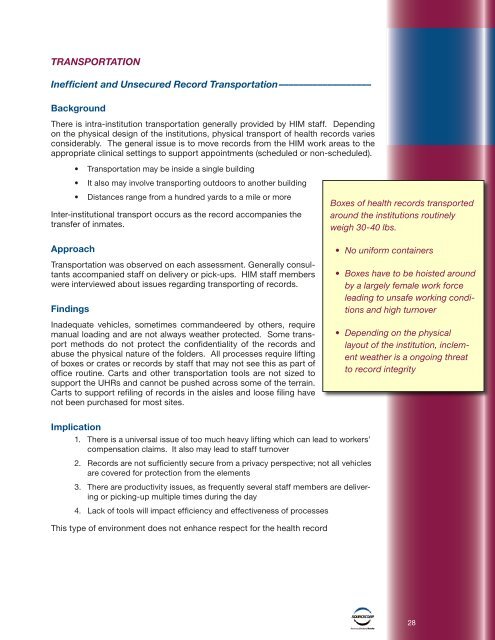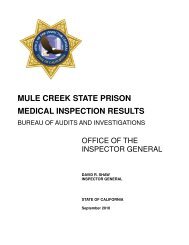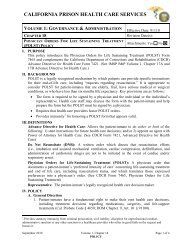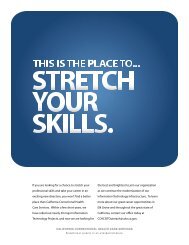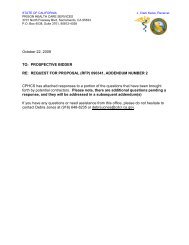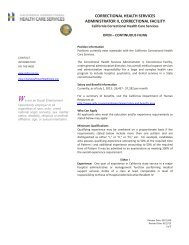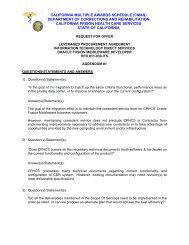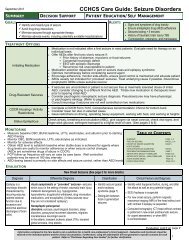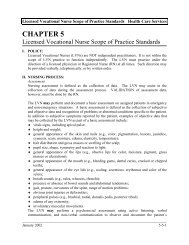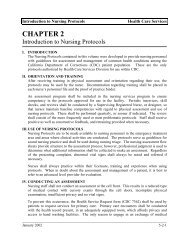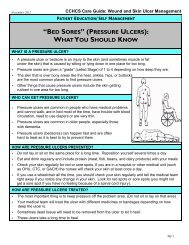Health Information Management Operational Assessment
Health Information Management Operational Assessment
Health Information Management Operational Assessment
You also want an ePaper? Increase the reach of your titles
YUMPU automatically turns print PDFs into web optimized ePapers that Google loves.
Transportation<br />
Inefficient and Unsecured Record Transportation–––––––––––––––––––<br />
Background<br />
There is intra-institution transportation generally provided by HIM staff. Depending<br />
on the physical design of the institutions, physical transport of health records varies<br />
considerably. The general issue is to move records from the HIM work areas to the<br />
appropriate clinical settings to support appointments (scheduled or non-scheduled).<br />
• Transportation may be inside a single building<br />
• It also may involve transporting outdoors to another building<br />
• Distances range from a hundred yards to a mile or more<br />
Inter-institutional transport occurs as the record accompanies the<br />
transfer of inmates.<br />
Approach<br />
Transportation was observed on each assessment. Generally consultants<br />
accompanied staff on delivery or pick-ups. HIM staff members<br />
were interviewed about issues regarding transporting of records.<br />
Findings<br />
Inadequate vehicles, sometimes commandeered by others, require<br />
manual loading and are not always weather protected. Some transport<br />
methods do not protect the confidentiality of the records and<br />
abuse the physical nature of the folders. All processes require lifting<br />
of boxes or crates or records by staff that may not see this as part of<br />
office routine. Carts and other transportation tools are not sized to<br />
support the UHRs and cannot be pushed across some of the terrain.<br />
Carts to support refiling of records in the aisles and loose filing have<br />
not been purchased for most sites.<br />
Boxes of health records transported<br />
around the institutions routinely<br />
weigh 30-40 lbs.<br />
• No uniform containers<br />
• Boxes have to be hoisted around<br />
by a largely female work force<br />
leading to unsafe working conditions<br />
and high turnover<br />
• Depending on the physical<br />
layout of the institution, inclement<br />
weather is a ongoing threat<br />
to record integrity<br />
Implication<br />
1. There is a universal issue of too much heavy lifting which can lead to workers’<br />
compensation claims. It also may lead to staff turnover<br />
2. Records are not sufficiently secure from a privacy perspective; not all vehicles<br />
are covered for protection from the elements<br />
3. There are productivity issues, as frequently several staff members are delivering<br />
or picking-up multiple times during the day<br />
4. Lack of tools will impact efficiency and effectiveness of processes<br />
This type of environment does not enhance respect for the health record<br />
28


